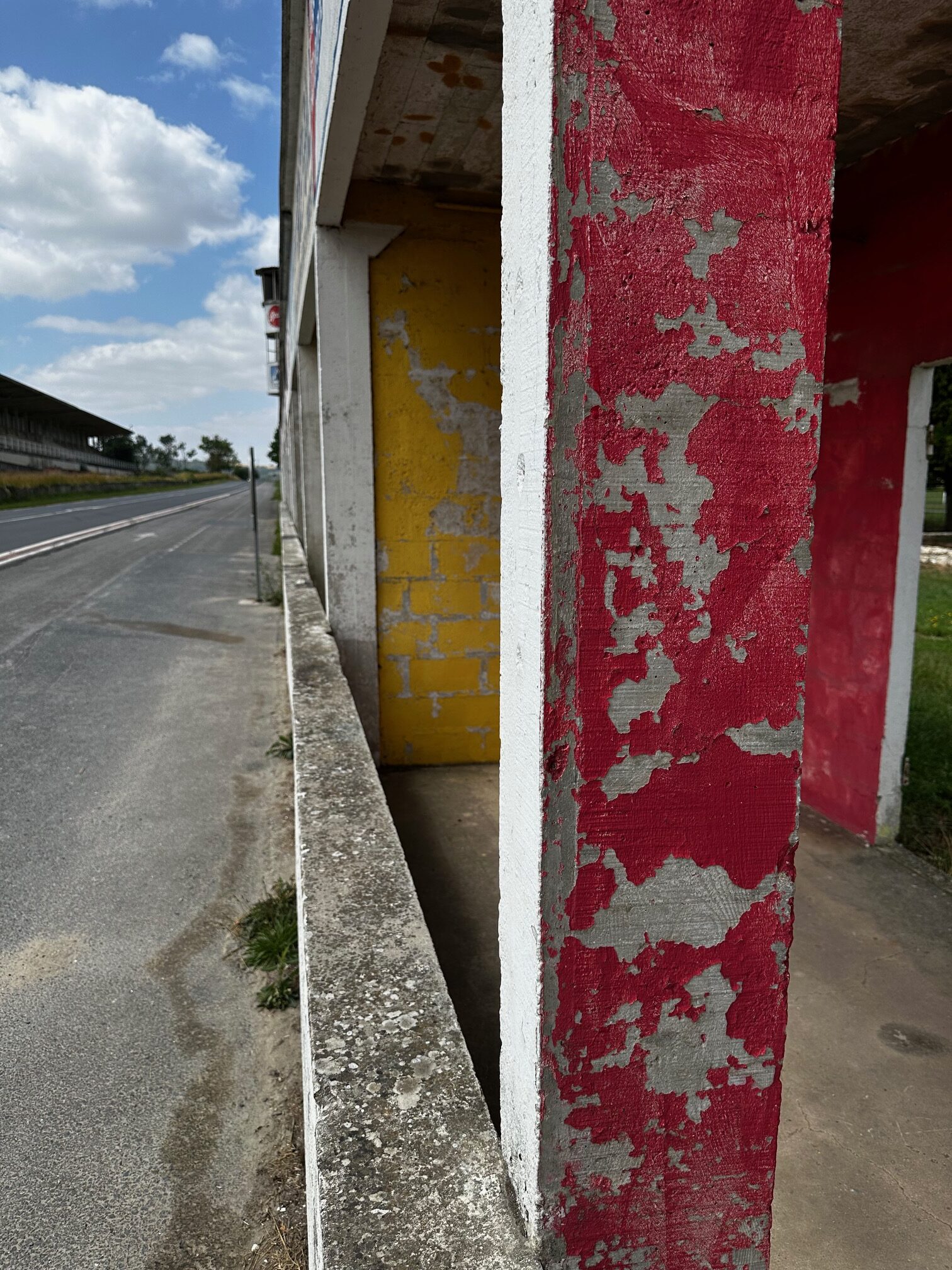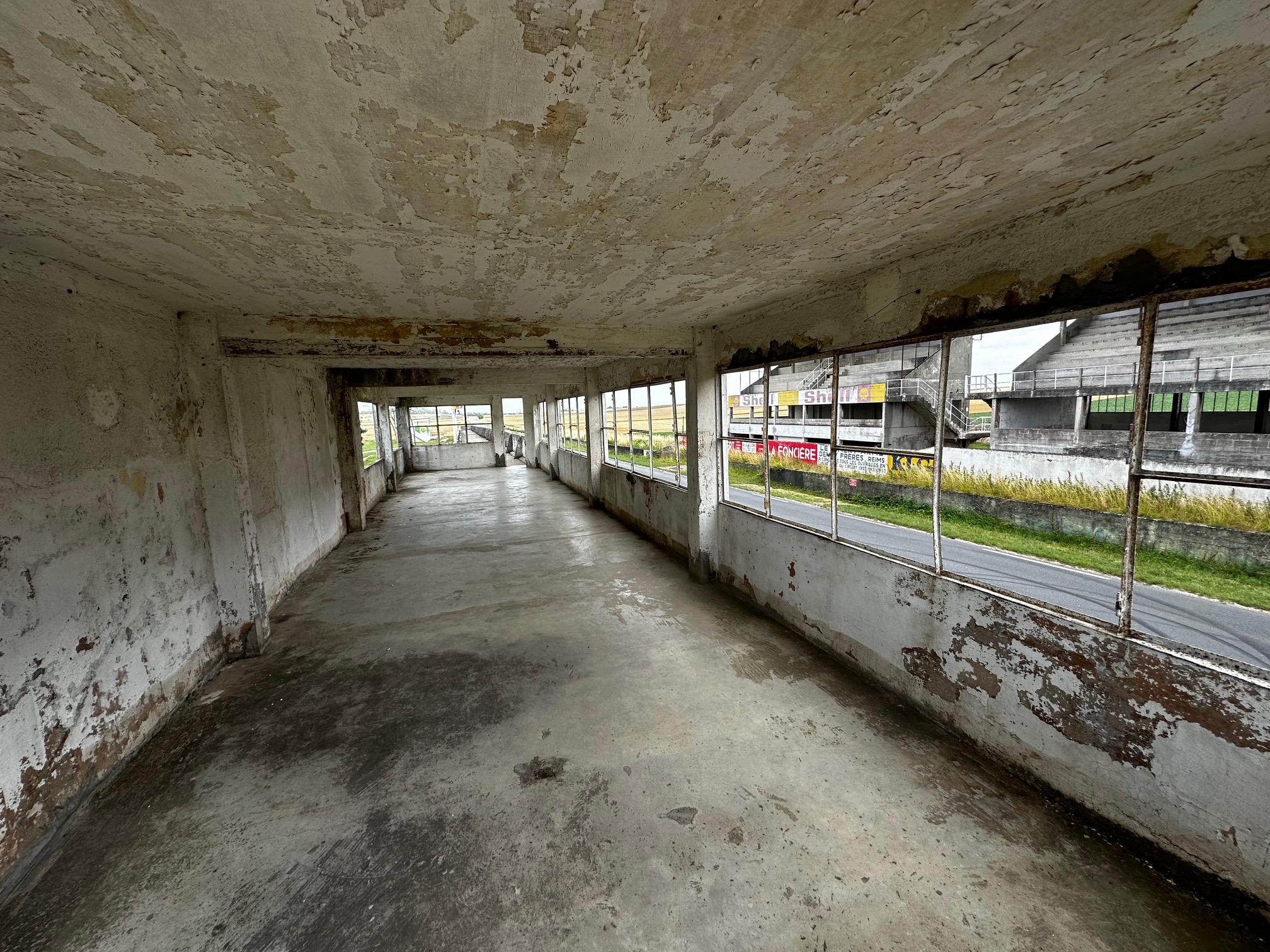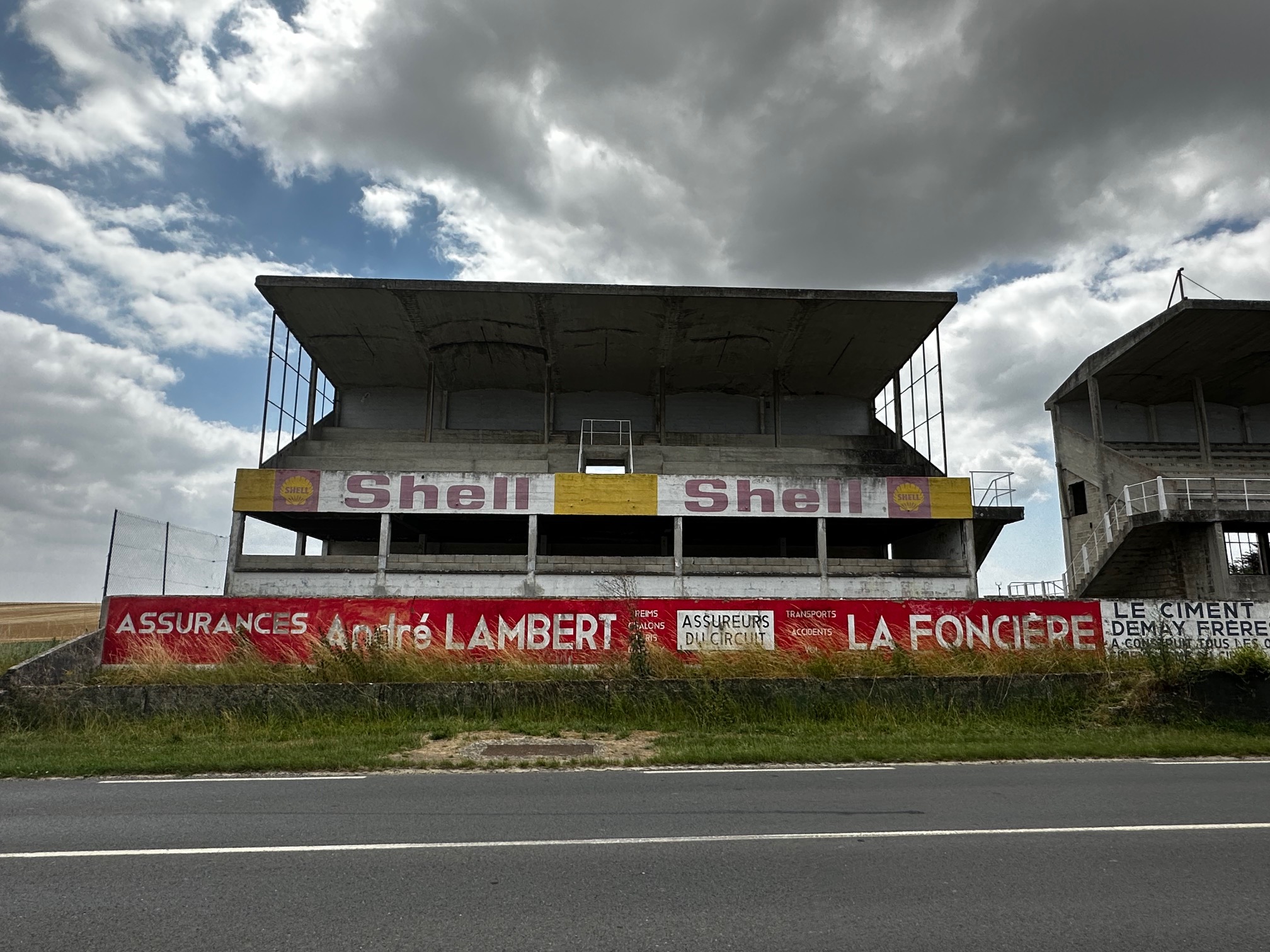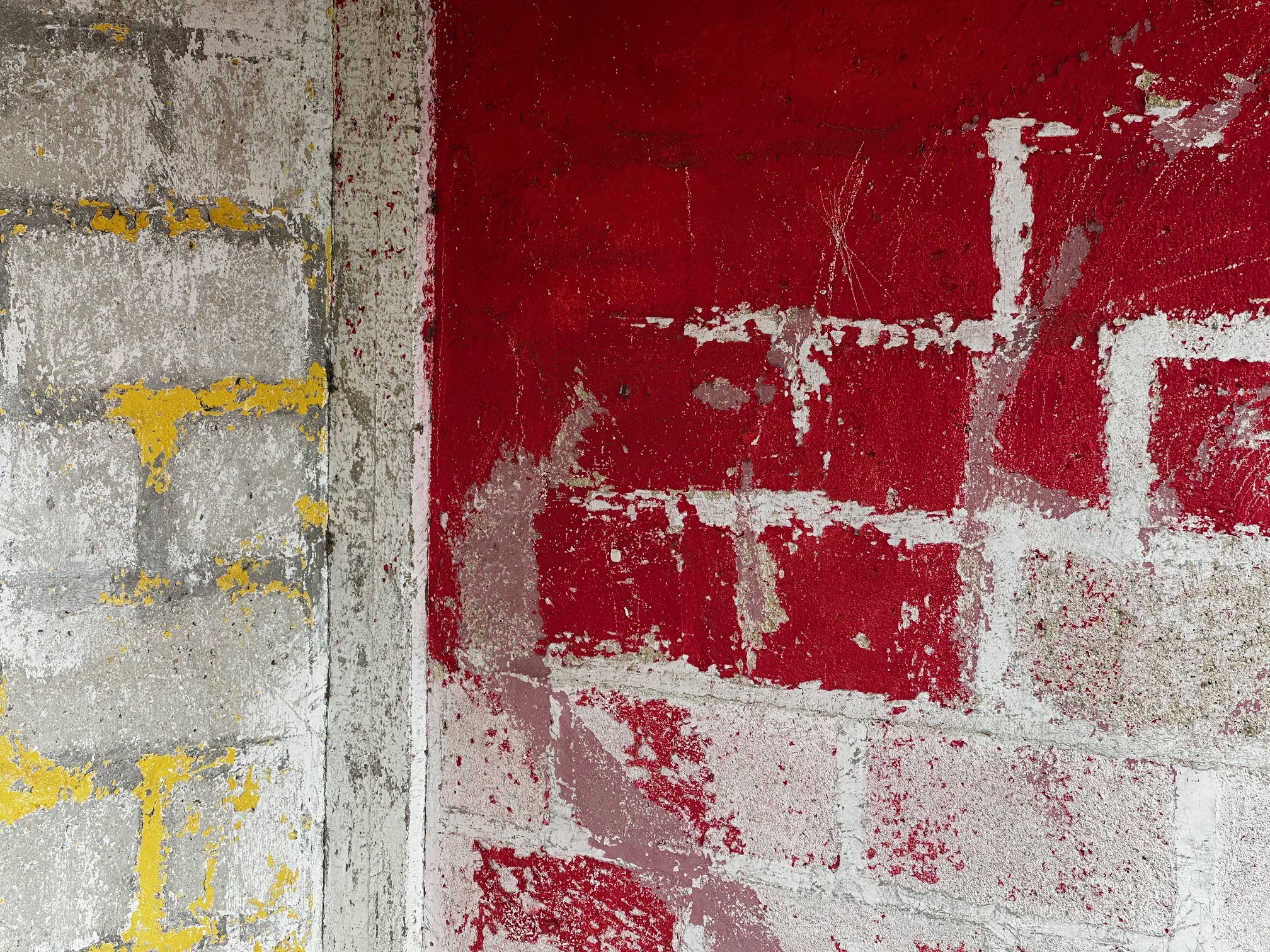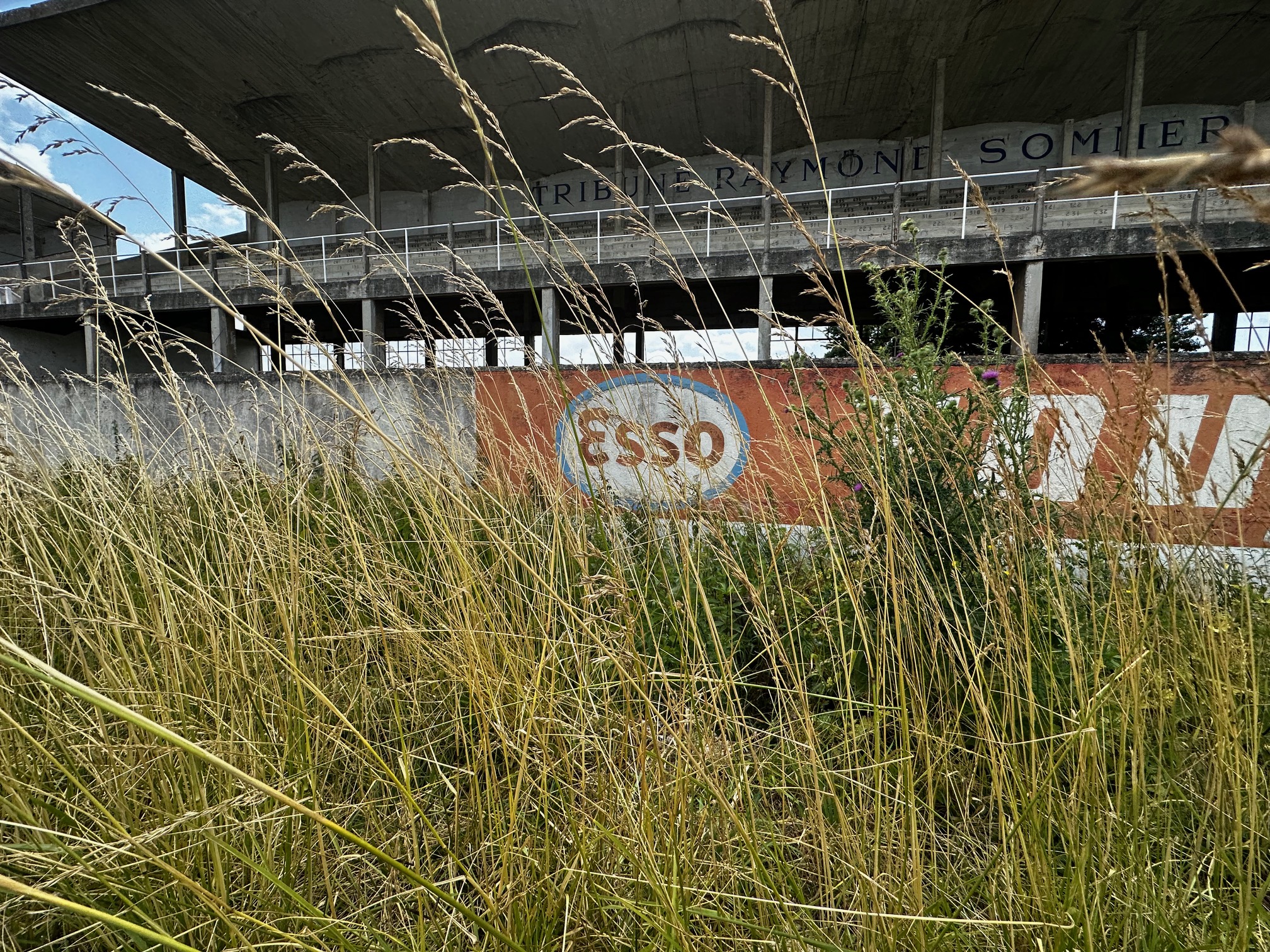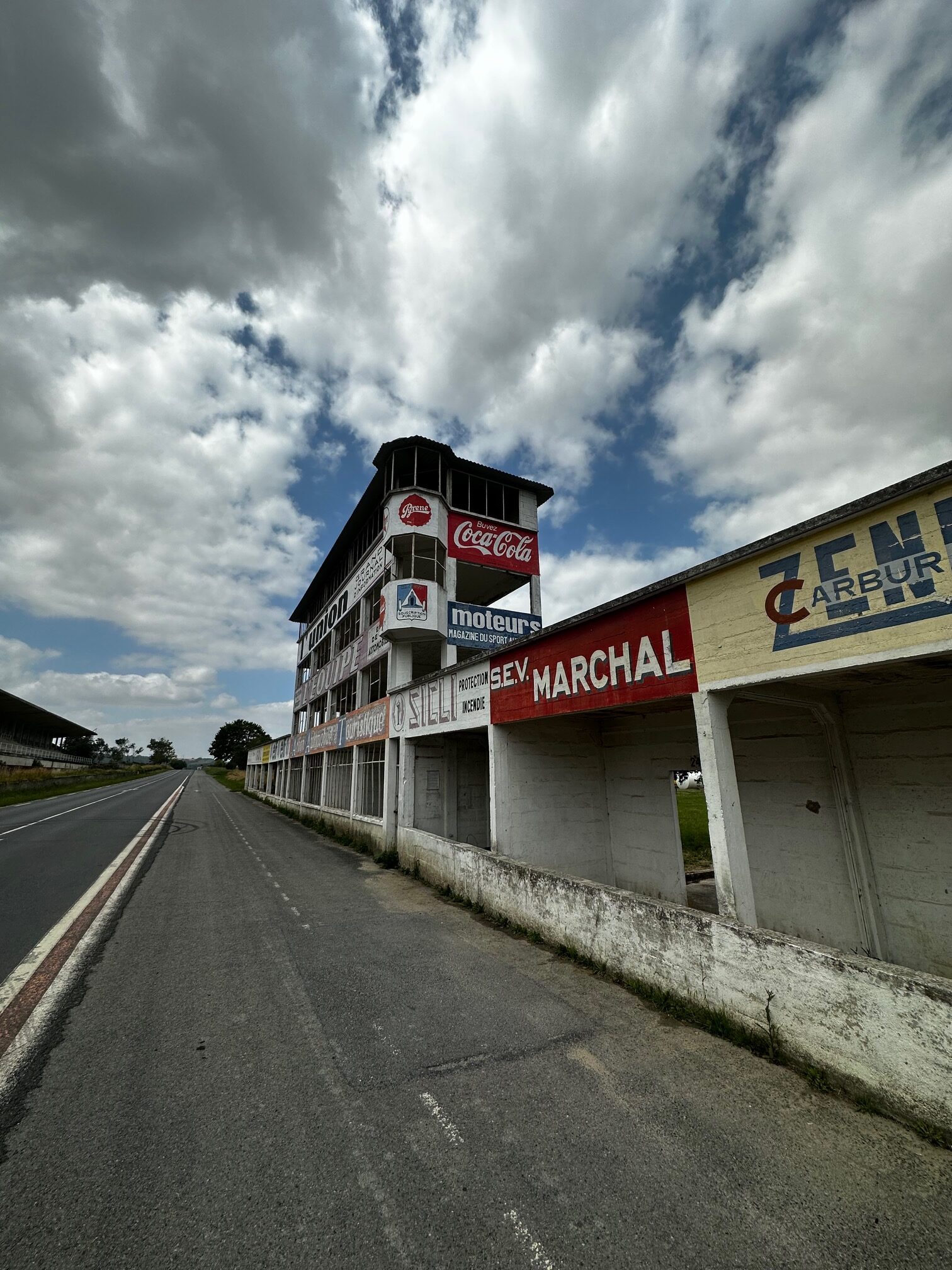The old racecourse in Reims, also known as the “Circuit de Reims-Gueux,” holds a significant place in the history of motorsport. Located in the Champagne region of France, the racecourse was in operation from the 1920s until the early 1970s. It witnessed thrilling races and iconic moments, cementing its status as one of the most renowned circuits of its time. When we came back from this years LeMans Classic we stopped at the old racecourse on our way back to Germany.

It is a special moment when you arrive at this legendary race course. It is so beautifully embedded in the magnificent landscape and when you look at the long start and finish straight, you think you can hear the engines of the old racing cars again. The brand logos of Esso, Castrol, Dunlop or Shell make the scenery as lively as if a race had taken place here recently. Many famous racing cars have stopped at this pit lane. The 12 Hours of Reims have also often taken place in early July.

The construction of the Reims-Gueux circuit began in 1925 and was completed in 1926. The track was built on public roads near the villages of Gueux and Thillois, about 7 kilometers west of the city of Reims. The original circuit was 7.82 kilometers long and had a triangular layout, comprising a mix of public roads and purpose-built sections.The first race held at Reims-Gueux took place on August 3, 1926. It was a grand prix race known as the “Grand Prix de la Marne,” which attracted numerous talented drivers and enthusiastic spectators. Throughout the following years, the circuit gained popularity and hosted various international motorsport events, including the French Grand Prix.
Reims-Gueux became particularly famous during the 1950s and 1960s when it was a regular fixture on the Formula One calendar. The circuit’s high-speed nature and long straights made it a challenging and exciting track for both drivers and fans. Legendary drivers such as Juan Manuel Fangio, Stirling Moss, and Jim Clark showcased their skills on this historic circuit.
The circuit underwent several modifications over the years to improve safety and accommodate the evolving requirements of motorsport. The most significant change occurred in 1952 when the track layout was shortened to 8.302 kilometers, eliminating a section of public road. Further modifications were made in subsequent years to enhance safety measures and provide a better racing experience. However, despite its popularity and historical significance, the Reims-Gueux circuit faced challenges in the late 1960s. Financial difficulties and concerns over safety led to the circuit’s closure in 1972. The final race held at the old racecourse was a Formula Two event won by Jean-Pierre Jarier.
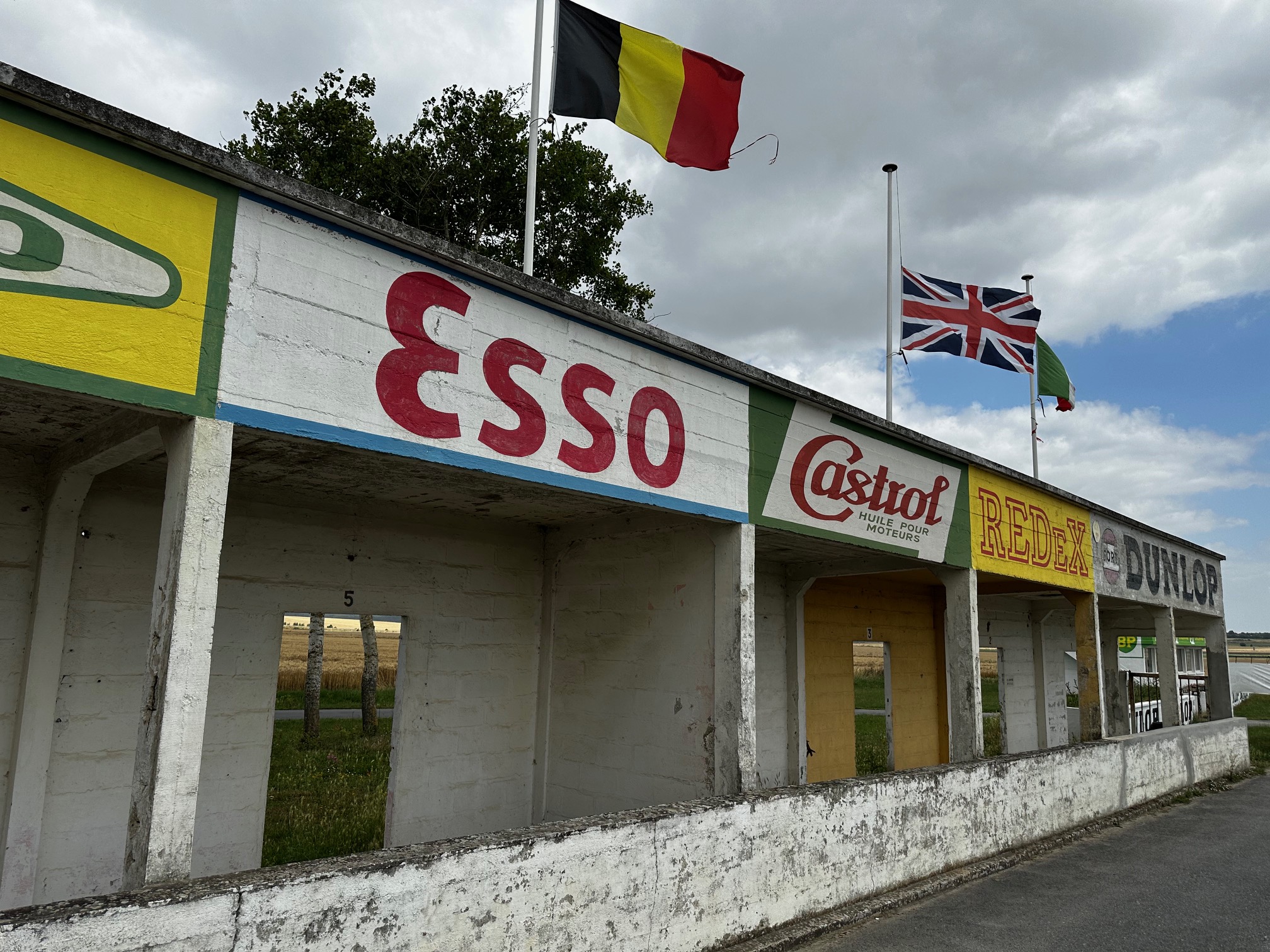
Today, remnants of the old Reims-Gueux circuit can still be found. The start-finish straight, pit buildings, and some sections of the track have been preserved by local enthusiasts as a reminder of its glorious past. The old grandstands and infrastructure have become part of the landscape, serving as a nostalgic tribute to the circuit’s golden era. Although the Reims-Gueux circuit is no longer in use, its legacy lives on in the hearts of motorsport enthusiasts. It remains an important chapter in the history of racing, symbolizing an era of thrilling competition and the pursuit of speed in the beautiful Champagne region of France. Hope you enjoy our photo gallery here.

